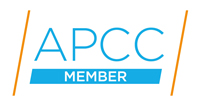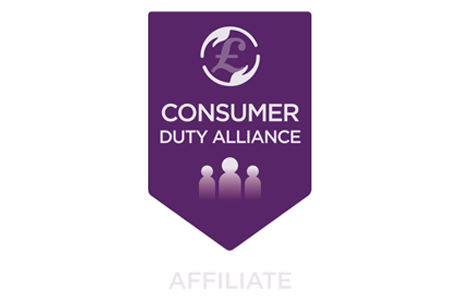Free marketing tools for your business

Aimee Carnwath
23 July 2024This year in Summer School, we will cover social media, building your brand, email marketing, websites, and business strategy. The following tools will help you develop your marketing in all these areas.
Canva: Social media is constantly evolving, and it takes more effort to stand out from the stream of other posts your potential customers see. Regardless of the platform, text alone is often not enough; you need videos or images to capture your audience’s attention. Popular platforms like Instagram or TikTok require an image or video for posting. Thankfully, Canva is a tool that easily creates eye-catching visual content.
Canva is a free tool that allows you to produce professional-looking graphic images and videos without prior graphic design knowledge. Simply search for a template that suits your needs, such as “Social media event post” or “business TikTok”, choose from thousands of pre-existing free templates, and add your colours, images, and wording. If you are feeling adventurous, you can even experiment with creating your own designs using their easy-to-use editor.
Canva is not limited to social media content. It can also help you produce designs for banners, posters, PDFs, and more. A paid version allows access to more advanced features.
Mailchimp:
If you’ve ever received a marketing email and wondered how it looks professional, knows your name, what products you’ve been looking at, and where you are in your buying journey, chances are the sender has used a tool like Mailchimp. Email marketing can be a great part of your marketing strategy, but it’s important to take a considered approach to increase engagement.How can you make your emails more impactful?
- Starts with the subject line, which should be concise, catchy, and clear.
- When people open the email, they should quickly understand what it’s about and what action to take. Keep emails short where possible, including links to find out more information or read more detail if needed.
- Mailchimp provides templates that allow you to create informative but concise emails, visually appealing and branded with your logo and contact details, and provides live advice to ensure your emails are as good as they can be.
- Once your email is designed, you can set up your audience directly in Mailchimp with easy import options, guiding you to help stay GDPR compliant. The free plan allows you to create one audience with 500 contacts.
- You can schedule emails to send at the optimum time and set up tests to ensure your email designs are effective.
Buffer:
Synchronising your marketing activities to ensure a consistent message is something we strive for at Paradigm, and we encourage your business to do the same. We’ve discussed scheduling marketing emails, but what about social media?Social media management tools might be the solution. These tools allow you to connect multiple channels to one platform and schedule posts simultaneously. This means you don’t need to log in to each platform individually to create the same posts and can schedule posts ahead of time, allowing you to focus on your business. You’ll also get access to in-depth analytics and tips to boost your posts’ performance.
Buffer is a good option if you are looking for a free social media management tool. Their free plan enables you to connect three channels and grants access to their landing page builder and AI assistant.
Biteable:
TikTok has become the platform of choice for many brands due to its high engagement rates. Other platforms, like Instagram and Facebook, now prominently feature reels. Biteable is a tool we use to create some of our promotional videos and the intros and outros for our Insights videos. With a free account, you can create videos from scratch or personalise existing templates using keywords.Vimeo:
Once you’ve created your video, it’s time to upload it to the web. Two of the most popular platforms are YouTube and Vimeo – both are free to use. YouTube is the most popular video platform on the internet and can be great for organic growth with a dedicated strategy, but this often doesn’t apply to most companies. At Paradigm, we use Vimeo. Vimeo allows us to upload and organise videos and manage them with folders and tags. They are easily shareable across various platforms and integrate directly with many of the other tools mentioned.
Google:
Google provides a plethora of free tools to support your business’s digital growth. These tools offer a wealth of data, and even a surface-level understanding can provide valuable insights.
Google Business Listing:
Your Google business listing appears when you find a business on Google Maps. It enables potential customers to find you based on your physical location – crucial if you are in a busy area, such as a town centre. Once set up, your Google Business listing should display when potential customers Google your business name, allowing customers to leave reviews and improve your credibility.Google Analytics:
Google Analytics often forms the backbone of many digital strategies. Through a simple piece of code, Google Analytics tracks every visitor to your website and their activity. This enables you to see the total number of users, how many times they viewed your pages, pages with a high bounce rate, how long they spend on your website or a page, and more. In-depth analysis can reveal where your most valuable users come from and the paths they take through your site.We recommend that you use this on your website and become familiar with the key metrics available to you, using this to further improve your website. We’ll delve into more detail on this in week 5!
Google Search Console:
If Google Analytics tells you how users interact with your website, Google Search Console tells you how well your website performs on a technical level. Search Console gives you an overview of how your website ranks for certain keywords (i.e., how high it appears on Google when people search for something). It also provides reports on broken links throughout your website and its usability on different devices, such as desktop PCs or mobile devices.
ChatGPT:
One of the most talked-about online tools of the last year is ChatGPT. This highly popular tool uses artificial intelligence to provide users with solutions to nearly any problem. While the idea of using AI may sound intimidating, ChatGPT is completely free and requires no technical knowledge.ChatGPT operates in a chat format – it works like you are messaging a real person on a messaging platform. With the entire internet at its disposal, ChatGPT can understand your request, research the topic, and respond nearly instantly. It’s not perfect, and like a real person, it is still worthwhile to check the content it creates, but it can be a great starting point. Some uses of ChatGPT include:
- Proofreading content you have written
- Providing ideas for content creation
- Troubleshooting problems
- Creating plans for marketing strategies
As one of the leading AI tools, OpenAI, ChatGPT’s creators, are constantly developing the platform. As of July 2024, one of the next major updates to ChatGPT will likely be to improve its reasoning skills to make its decisions more useful.
Please be mindful of what personal data you upload to ChatGPT, whether that be your own data, your staff or client data. Where possible, use it for ideas and support, rather than uploading personal, sensitive or private information.


